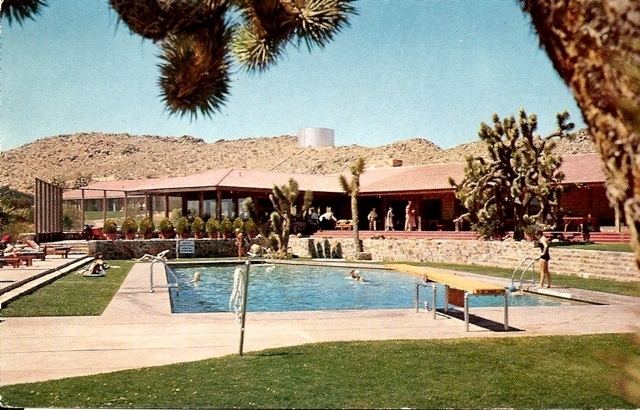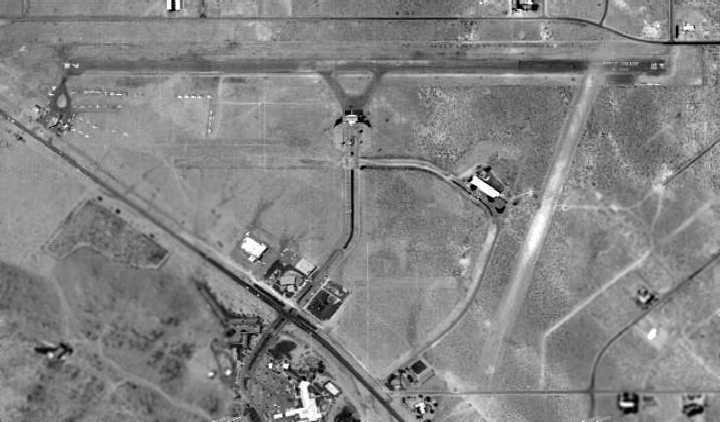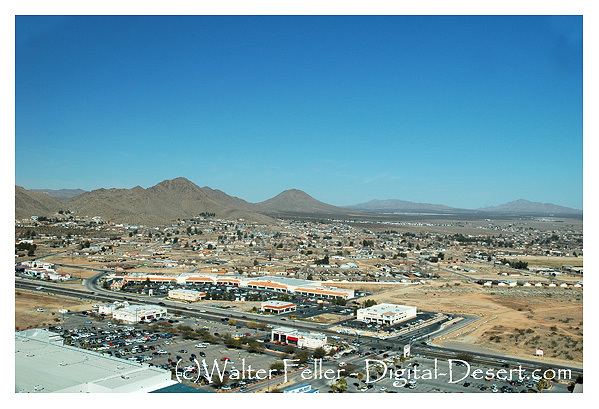Country United States State | Population 70,924 (2013) Area 73.523 sq mi | |
 | ||
Unemployment rate 7.7% (Dec 2014) | ||
Map of Apple Valley, California
The Town of Apple Valley is located in the Victor Valley of San Bernardino County, in the U.S. state of California. It was incorporated on November 14, 1988, and is one of the twenty-two incorporated municipalities in California that uses "town" in its name instead of "city." The town is east of and adjoining to the neighboring cities of Victorville and Hesperia, 37 miles (60 km) south of Barstow and 46 miles (74 km) north of San Bernardino through the Cajon Pass. The population was 69,135 at the 2010 census.
Contents
- Map of Apple Valley California
- Hilltop house apple valley california
- Apple valley california
- Geography
- Climate
- History
- 2010
- 2000
- Public Safety
- Cemeteries
- Government
- Education
- High Schools comprehensive 912
- Middle Schools K8
- Elementary Schools K6
- Private Schools
- Notable people
- Film History
- References

Apple Valley is governed by a town council, whose current mayor is Larry Cusack. The mayor changes each December.

Apple Valley was home to Roy Rogers and Dale Evans, whose museum was first established in Apple Valley (in 1967) before the museum was relocated to Victorville in 1976. Since 2003, the museum has been in Branson, Missouri. The move was made in hopes of reaching more fans; however, the museum closed for financial reasons on December 12, 2009.
Hilltop house apple valley california
Apple valley california
Geography
Apple Valley is located at 34°31′N 117°13′W (34.5115, -117.2120).
Apple Valley is located at the southern edge of the Mojave Desert. It is bordered by the cities of Victorville on the west and Hesperia on the southwest sides, with the Census-Designated Place of Lucerne Valley a distance to the east and the city of Barstow c. 30 miles to the north. Apple Valley, in combination with Victorville, Hesperia, Adelanto and immediate surrounding areas, are commonly known as the Victor Valley. The primary thoroughfare through Apple Valley is State Route 18, which was given the moniker "Happy Trails Highway" within Apple Valley town limits, after the theme song of Roy Rogers and Dale Evans, who once resided on Outer Highway 18. The commercial area is split currently between State Route 18 and Bear Valley Road (the two roads are near parallel until they intersect in the east, outside of town). The Mojave River that borders the west side of Apple Valley, is one of only a handful of rivers in the world to flow magnetic north. The town is bounded on its southern edge by the foothills of the San Bernardino mountains.
According to the United States Census Bureau, the town has a total area of 73.5 square miles (190 km2) of which 73.2 square miles (190 km2) is land and 0.3 square miles (0.78 km2), or 0.45%, is water.
The elevation of Apple Valley is approximately 2,900 feet (880 m) above sea level.
Climate
Apple Valley is comfortable throughout most of the year, with few snowfalls (0-3/year) in the winter and warm sunny days from late spring to early fall. Seasonal high winds occur occasionally in spring and fall. According to the Köppen Climate Classification system, Apple Valley has a semi-arid climate, abbreviated "BSk" on climate maps.
History
For centuries, Apple Valley was populated by Shoshonean, Paiute, Vanyume, Chemehueve and the Serrano who were attracted to the water and vegetation around the Mojave River. The Mojave people came later and were the tribal group encountered in 1542 by a detachment of Coronado's men. These were the first Spanish to come to the Mojave desert.
Pedro Fages came through the area in 1772, looking for deserters. Father Garces spent time in the area in 1776. He was on good terms with local tribes. He killed one of his mules to feed a group of starving Vanyumes. Garces established a trail across the Mojave to the Colorado River passing through the Apple Valley area.
The area was explored by various Spanish gold seekers in the 18th and 19th centuries. Jedediah Smith established the Old Spanish Trail through the southern Mojave and Cajon Pass. Smith was in the area in 1826 and again in 1827.
Throughout the 19th century, Apple Valley became a thoroughfare of people traveling to Southern California for various reasons. Ute horse thieves, led by Chief Walkara, brought through an estimated 100,000 horses from their raids on the Lugo Rancho and San Gabriel Mission.
In 1848, members of the Mormon Battalion, mustered out of the U.S. Army after constructing the first wagon road across the southwest to San Diego and up to Los Angeles, brought 135 mules and the first wagon through the Cajon Pass up through the Mojave River Valley on the way to the Salt Lake Valley. Battalion leader Jefferson Hunt and a crew of cowboys followed the trail with the first cattle drive from Southern California to hungry Mormons in Utah. Hunt led a Mormon group of settlers to the San Bernardino Valley in 1851.
In 1885, the railroad came northward through the Cajon Pass and established a train stop, calling it Victor (Victorville) on the Mojave River in the area then known as Mormon Crossing. John Brown helped build some of the first roads through Apple Valley opening up freight and stagecoach travel from the mining camps at Gold Mountain and Holcomb Valley to the railroad. In the 1860s, Mormon pioneer LaFayette Mecham built the wagon road, a short cut across the desert, now known as Stoddard Wells Road. Over the next few decades, Victorville boomed as the commercial center of the area with gold refineries, quarries, dance halls and saloons, while Apple Valley remained more pastoral with ranches and apple orchards.
The naming of Apple Valley is usually associated with John F. Appleton. However, the name was finalized with development in the 1940s. The Apple Valley name was officially recognized when a post office was established in 1949.
One well known apple orchard was owned by Max Ihmsen, publisher of the Los Angeles Examiner newspaper. In 1915, he developed 320 acres (1.3 km2) of apples and pears. The fame of Apple Valley spread as Ihmsen fruit won many agricultural awards. In the late 1930s, Ihmsen's son-in-law, Cal Godshall, took over the business operations and made the ranch famous as the birthplace of California college rodeo with the first intercollegiate rodeo competition ever held in the United States.
Apple farming in the area started to decline about the time Ihmsen Ranch fruit production was at its prime. Water rates shot up with a switch to electric pumps. World War I took owners and workers away with the draft. During the Great Depression many families left the mostly agricultural area looking for work. Washington and British Columbia apple growers were able to cut prices because they shipped their produce by river transportation, whereas Apple Valley apples were transported by rail or by truck. The death knell was a series of outbreaks of a virulent fungus infections coupled with frost, heat and hail in 1944, 1945 and 1946.
A small orchard was maintained on the grounds of the Apple Valley Inn until it closed in 1986. But the last commercially grown apples in Apple Valley had all but disappeared before the US Post Office officially recognized the name.
2010
The 2010 United States Census reported that Apple Valley had a population of 69,135. The population density was 940.3 people per square mile (363.1/km²). The racial makeup of Apple Valley was 47,762 (69.1%) White (55.5% Non-Hispanic White), 6,321 (9.1%) African American, 779 (1.1%) Native American, 2,020 (2.9%) Asian, 294 (0.4%) Pacific Islander, 8,345 (12.1%) from other races, and 3,614 (5.2%) from two or more races. Hispanic or Latino of any race were 20,156 persons (29.2%).
The Census reported that 68,674 people (99.3% of the population) lived in households, 161 (0.2%) lived in non-institutionalized group quarters, and 300 (0.4%) were institutionalized.
There were 23,598 households, out of which 9,169 (38.9%) had children under the age of 18 living in them, 12,647 (53.6%) were opposite-sex married couples living together, 3,550 (15.0%) had a female householder with no husband present, 1,513 (6.4%) had a male householder with no wife present. There were 1,582 (6.7%) unmarried opposite-sex partnerships, and 177 (0.8%) same-sex married couples or partnerships. 4,743 households (20.1%) were made up of individuals and 2,429 (10.3%) had someone living alone who was 65 years of age or older. The average household size was 2.91. There were 17,710 families (75.0% of all households); the average family size was 3.32.
The population was spread out with 19,306 people (27.9%) under the age of 18, 6,494 people (9.4%) aged 18 to 24, 15,068 people (21.8%) aged 25 to 44, 17,602 people (25.5%) aged 45 to 64, and 10,665 people (15.4%) who were 65 years of age or older. The median age was 37.0 years. For every 100 females there were 96.0 males. For every 100 females age 18 and over, there were 91.0 males.
There were 26,117 housing units at an average density of 355.2 per square mile (137.2/km²), of which 16,297 (69.1%) were owner-occupied, and 7,301 (30.9%) were occupied by renters. The homeowner vacancy rate was 4.0%; the rental vacancy rate was 10.0%. 45,483 people (65.8% of the population) lived in owner-occupied housing units and 23,191 people (33.5%) lived in rental housing units.
During 2009–2013, Apple Valley had a median household income of $48,432, with 20.2% of the population living below the federal poverty line.
2000
As of the census of 2000, there were 54,239 people, 18,557 households, and 14,363 families residing in the town. The population density was 739.6 inhabitants per square mile (285.6/km²). There were 20,163 housing units at an average density of 275.0 per square mile (106.2/km²). The racial makeup of the town was 76.4% White, 7.9% African American, 1.0% Native American, 2.2% Asian, 0.2% Pacific Islander, 7.9% from other races, and 4.4% from two or more races. Hispanic or Latino of any race were 18.6% of the population.
There were 18,557 households out of which 38.8% had children under the age of 18 living with them, 57.8% were married couples living together, 14.2% had a female householder with no husband present, and 22.6% were non-families. 18.0% of all households were made up of individuals and 8.4% had someone living alone who was 65 years of age or older. The average household size was 2.90 and the average family size was 3.27.
In the town the population was spread out with 31.6% under the age of 18, 7.8% from 18 to 24, 25.2% from 25 to 44, 21.7% from 45 to 64, and 13.7% who were 65 years of age or older. The median age was 35 years. For every 100 females there were 93.8 males. For every 100 females age 18 and over, there were 89.7 males.
The median income for a household in the town was $40,421, and the median income for a family was $45,070. Males had a median income of $41,144 versus $30,249 for females. The per capita income for the town was $17,830. About 13.3% of families and 17.3% of the population were below the poverty line, including 24.6% of those under age 18 and 5.6% of those age 65 or over.
In addition to the latest census from 2000, the 2008 estimated population, of 72,922, includes 24,641 households of which 18,904 are family households. Approximately 70% of all housing units are owner occupied. The estimated racial make-up of the town includes 70.5% White, 10.0% African American, 1.0% Native American, 2.7% Asian, 0.3% Pacific Islander, 10.3% from other race, and 5.3% from two or more races. Hispanic or Latino of any race now make up approximately 25% of the population.
Out of 24,641 households, 42.7% have children under the age of 18 living with them. Of that figure, 65.5% are married couples living together, and 24.5% have a female householder with no husband present. Of all households, 18.1% are made up of individuals. The average household size is 2.9.
The age of the population is spread out with 28.3% under the age of 18, 10.6% from 18 to 24, 24.5% from 25 to 44, 23.2% from 45 to 64, and 13.4% who are 65 years of age or older. The median age is 33.4 years. For every 100 females there are currently 94 males.
The median income for a household in the town is $49,202, and the median income for a family is $56,810. The per capita income for the town is $21,777. About 13.5% of families are below the poverty line.
Public Safety
Law enforcement is provided by the San Bernardino County Sheriff's Department.
Fire, rescue, and paramedic services are provided by the Apple Valley Fire Protection District.
American Medical Response provides patient transportation via Paramedic / EMT ambulances.
Cemeteries
The Sunset Hills Memorial Park & Mortuary was opened in 1995 on Waalew Road. Dale Evans and Roy Rogers are buried there.
Government
In the California State Legislature, Apple Valley is in the 21st Senate District, represented by Republican Scott Wilk, and in the 33rd Assembly District, represented by Republican Jay Obernolte.
In the United States House of Representatives, Apple Valley is in California's 8th congressional district, represented by Republican Paul Cook.
Education
Apple Valley is highly regarded in San Bernardino County and the State of California for its excellent schools and education options. Apple Valley Unified School District operates two comprehensive high schools (9–12), one Charter school (K–12), one independent study (hybrid/online course) school (K–12), three academies (K–8) and ten elementary schools (K–6). There is one private school (Pre–12).
High Schools - comprehensive (9–12)
Middle Schools (K–8)
Elementary Schools (K–6)
Charter Schools
Independent Study
Private Schools
Notable people
Film History
Apple Valley has a long and storied relationship with Hollywood production studios and has been a filming location for many award-winning Feature Films, TV shows/movies, and Commercials:
Feature Films
Television
Commercials
